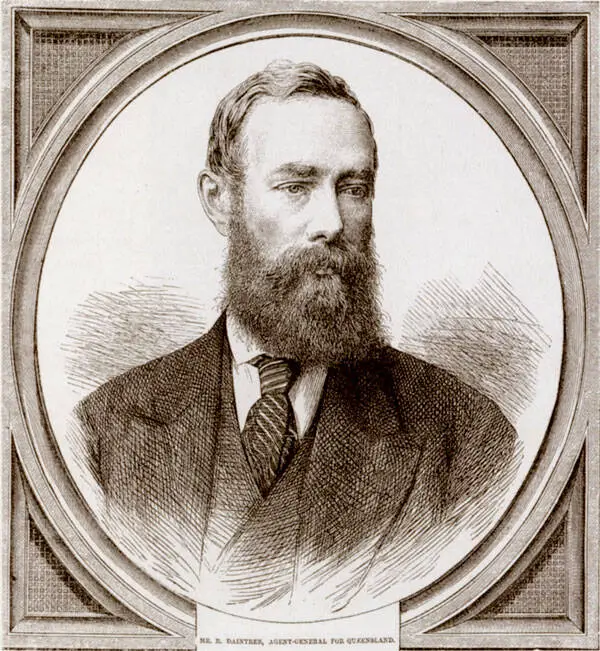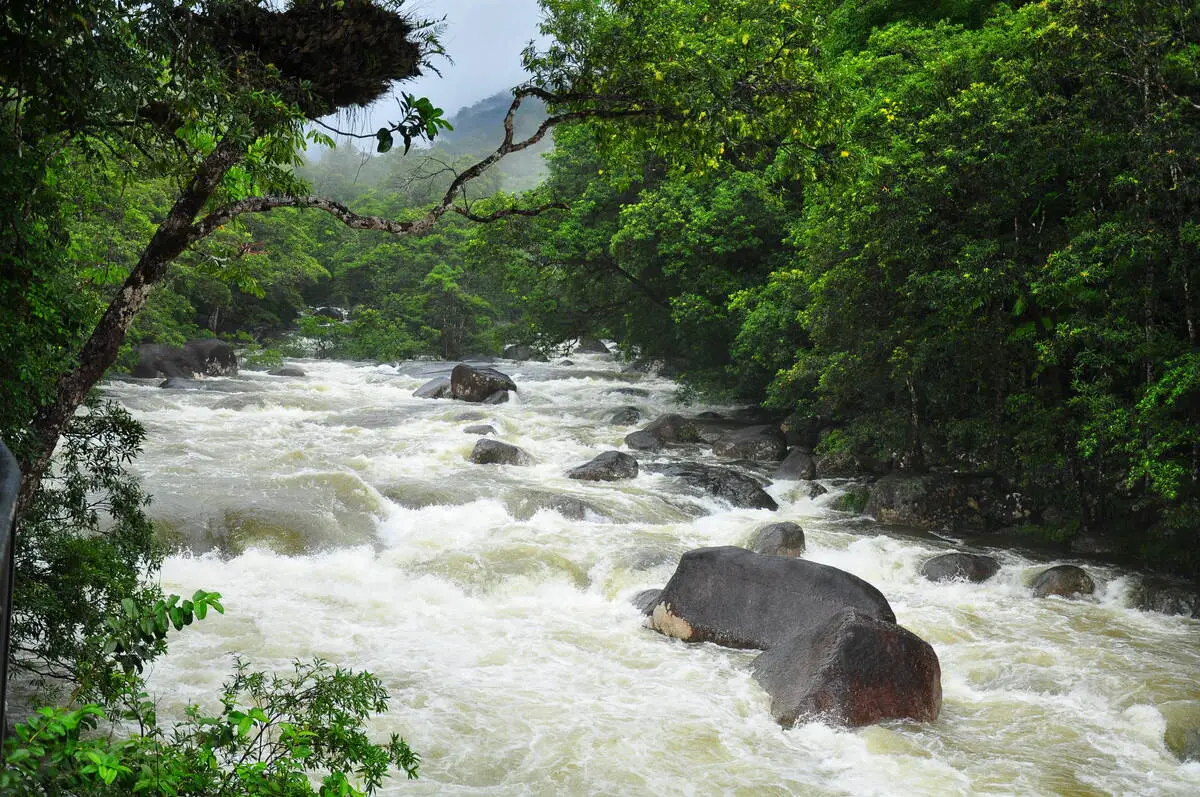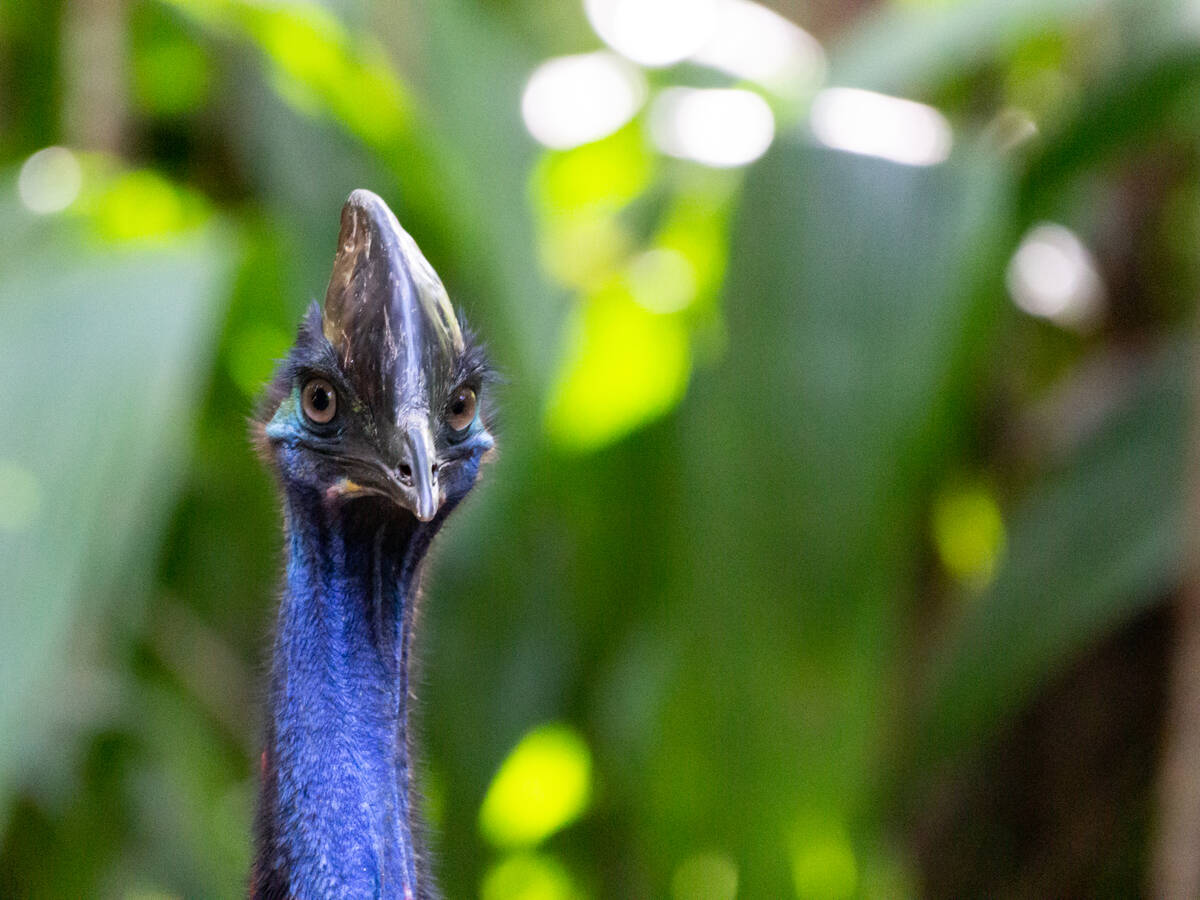World 🢖 Australia and Oceania 🢖 Australia 🢖 Queensland
Wonder
The Daintree Rainforest
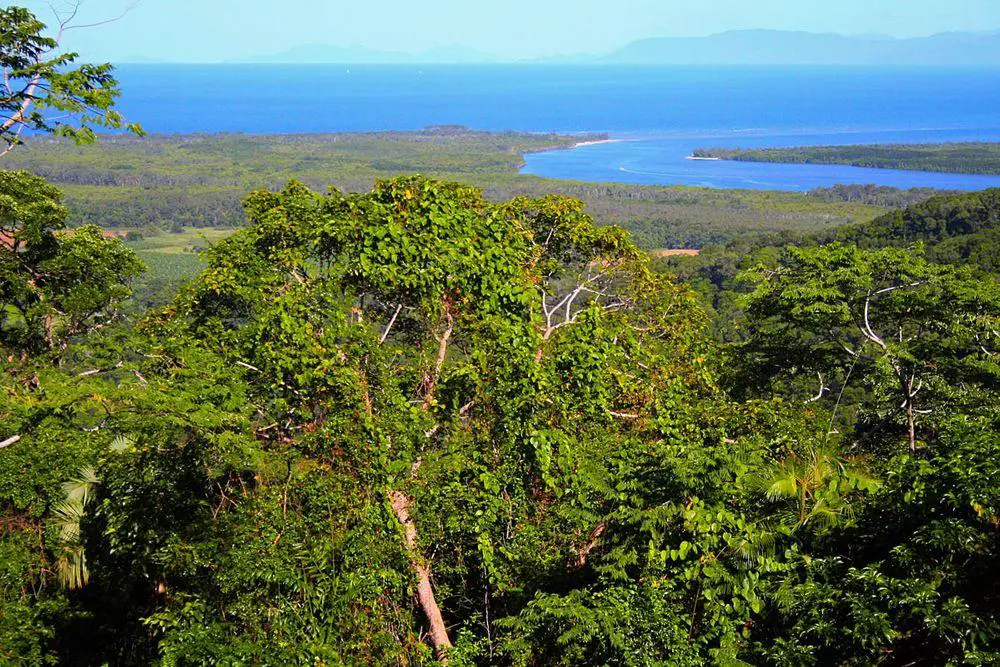
 In short
In short
Every year some 0.4 million visitors come to see the scenically beautiful Daintree Rainforest and the countless wonders in it. This is one of the most explored rainforests in the world which has provided us with new knowledge about the historical development of these ecosystems.
 51.0%
51.0%
GPS coordinates
Location, address
Map of the site
If you see this after your page is loaded completely, leafletJS files are missing.
 In detail
In detail
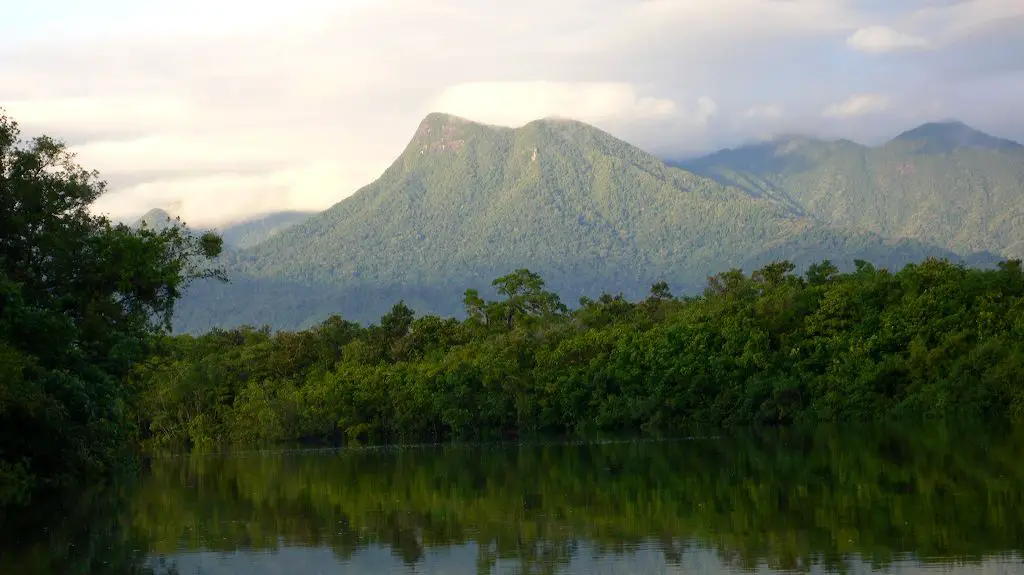
Daintree Rainforest is not the world’s oldest rainforest
The northern part of Queensland tropical rainforests – Daintree Rainforest – is a very interesting ecosystem with many unusual and rare species, such as primitive flowering plants and other life forms.
Almost all of the top-listed Google results for the term “Daintree Rainforest” lead to articles where it is stated that this is the oldest tropical rainforest in the world with an age of 135 or even 180 million years.
This statement is not correct. There indeed are aspects that link it to the 135 million years (and more) distant past but a tropical rainforest did not exist there continuously for all these millions of years. The history of this ecosystem is a lot more complex.
The break-up of Gondwana
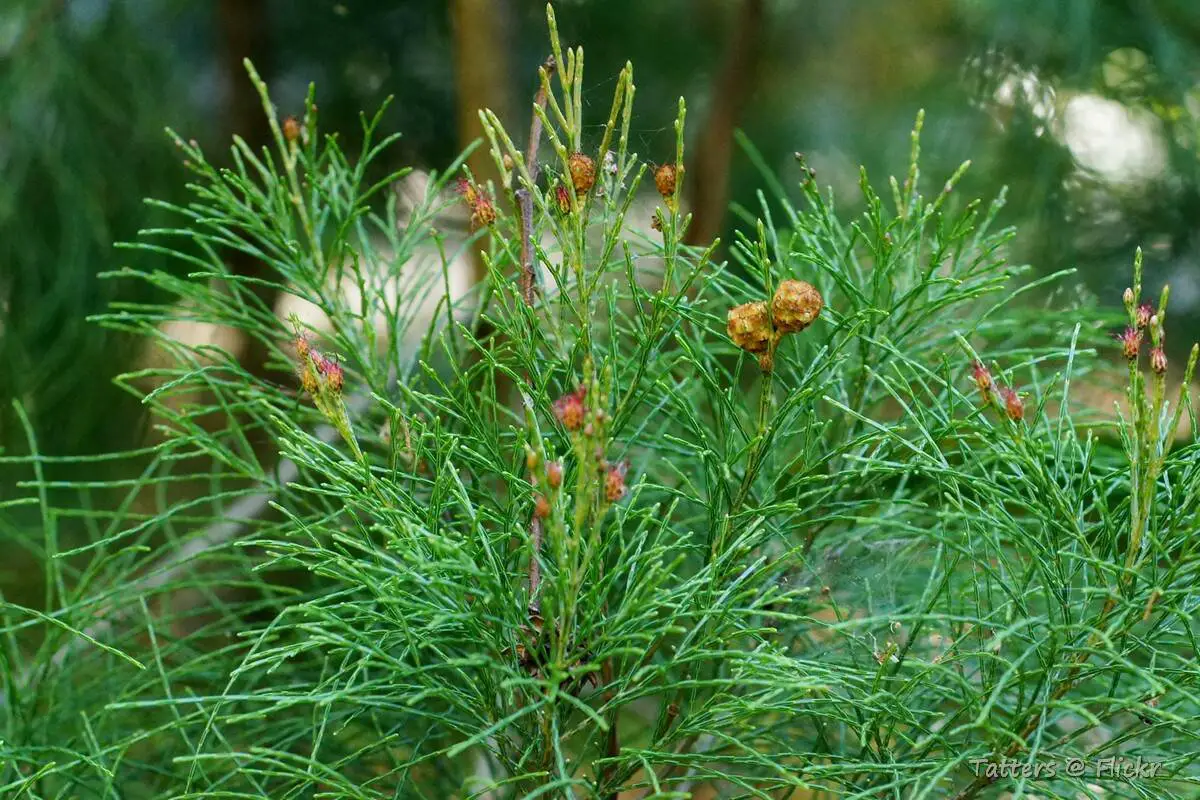
Thus… some 180 million years ago, during the Jurassic period started the break up of the giant Gondwana landmass. Present-day Queensland was a part of this landmass. In fact, Australia parted from Gondwana a lot later, some 58 million years ago.
Rather many species in the Australian tropical rainforests have descended from the times of Gondwana and are not met elsewhere in the world. But in other rainforests of Pacific and South-East Asia (and other locations around the world) are found primitive and unique species as well.
For example, there is an attractive plant – Gymnostoma australianum, a small tree with fine needle-like leaves. It grows only in the Daintree Rainforest. Similar plants existed in the times of Gondwana. But there are other Gymnostoma species elsewhere in Asia and the Pacific Islands.
Quaternary ice ages and advance of Eucalyptus woodlands
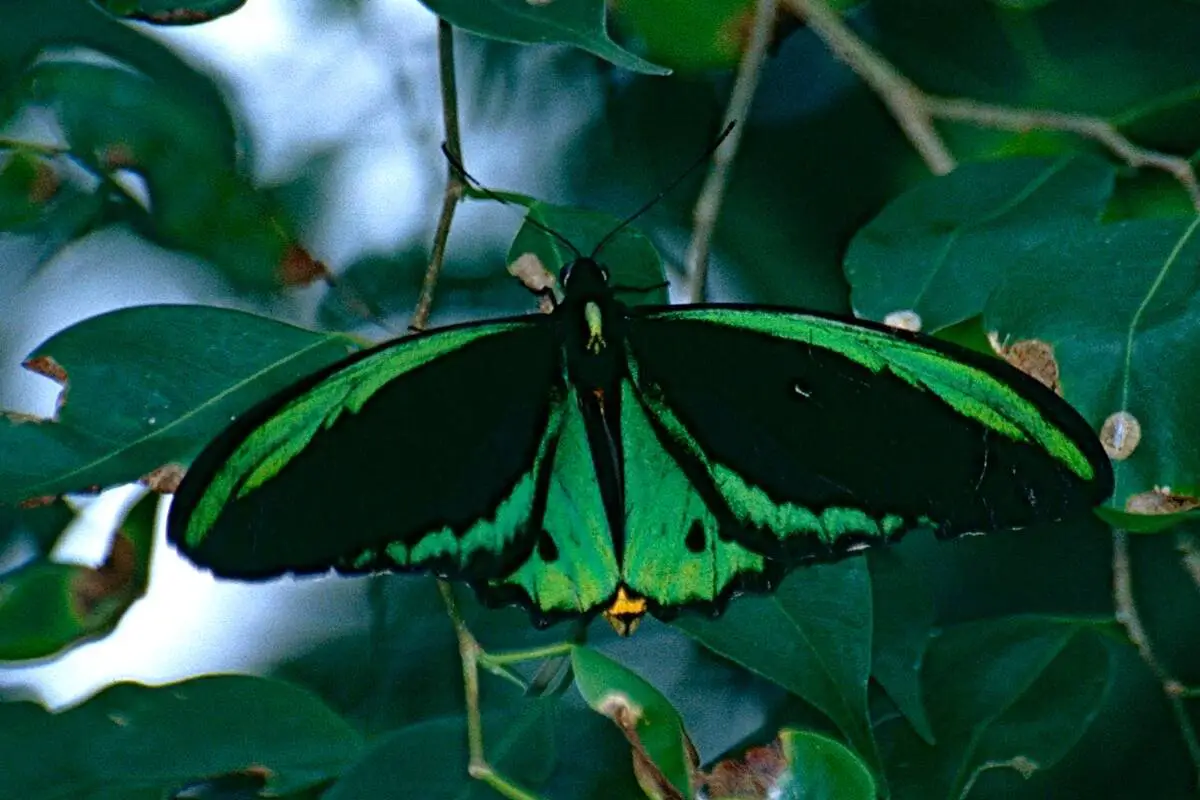
Major changes to the ecosystems of the world came some 2.58 million years ago when started a cycle of ice ages and interglacials between these ice ages. This period – the Quaternary period – continues up to this day.
The climate was drier and colder during the ice age, sea level was far below the current one.
The rainforests of Queensland were affected heavily by this. Most of the current rainforest, especially in the lowlands, was a different ecosystem – mostly Eucalyptus woodland.
Ice age ended and a warmer period came some 8000 years ago. During this time the rainforest started to spread over the Daintree area. This rainforest was filled with numerous unique and primitive species that survived the ice ages thanks to refugia.
Refugia
During the ice ages rainforest pockets survived higher in the hills and in the valleys of the streams on hillsides. These hills received more rainfall than the lowlands but the climate there was cooler: there was growing a somewhat different rainforest that could be compared to the contemporary temperate rainforests. As the climate changed during the numerous ice ages, even these rainforest pockets were changing, disappearing, and appearing elsewhere.
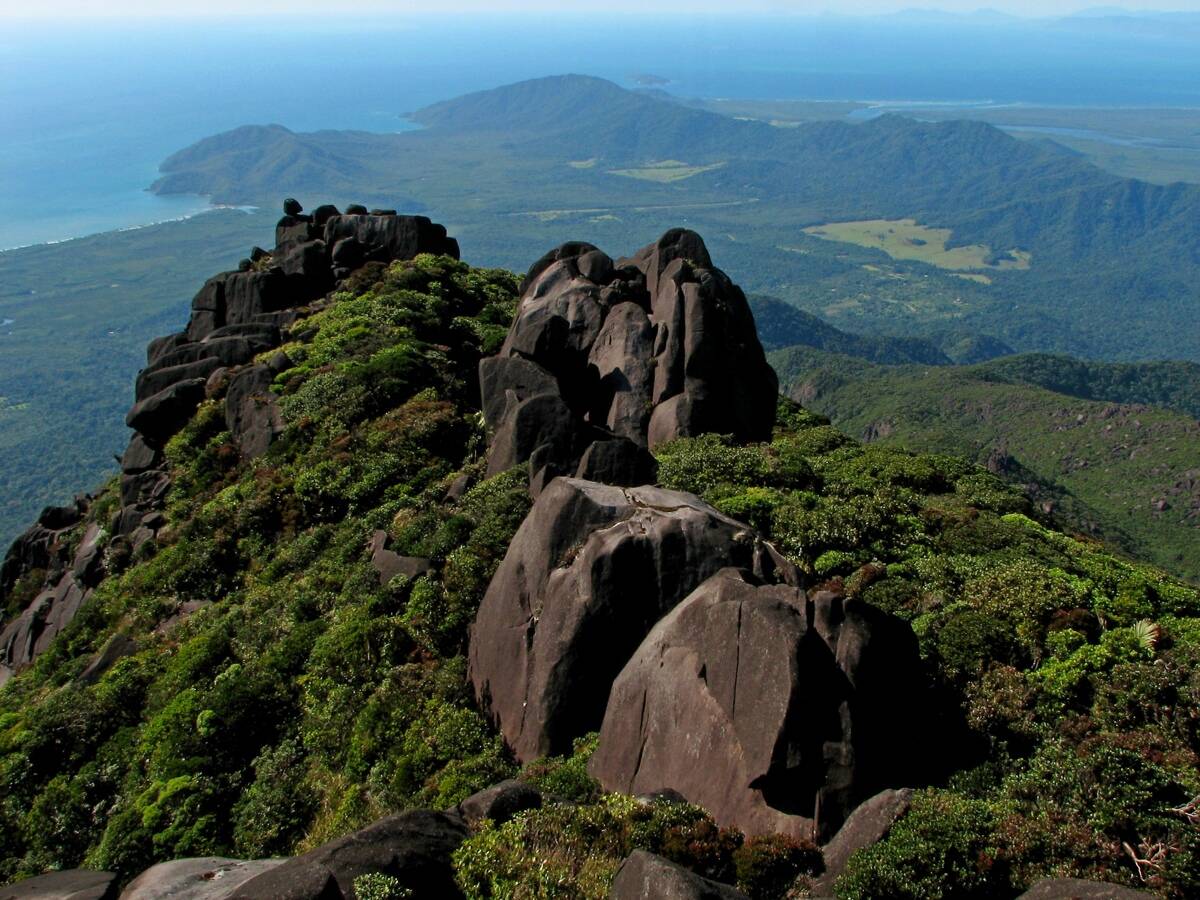
Such “pockets” of once large ecosystem are called refugia. A splendid example of a present-day refugium is, for example, Lord Howe Island with thousands of unique species that are not met anywhere else in the world.
There exists a theory that the biological diversity of many rainforests around the world to a large extent is determined exactly by refugia. During the periods of isolation in each refugium evolve variations of the ancient species of plants and animals. When the forest returns, it receives a huge diversity of species from these refugia.
It seems, this was the case also in the Daintree Rainforest: many of its awesome, unique, and unusually “primitive” species survived in small refugia until the return of the larger area of the contemporary rainforest.
Humans and the forest
Eucalyptus woodlands lingered in many lowlands of the Daintree area until fairly recent times even if the climate became beneficial for the rainforest. Most likely, this delay was caused by a new, important factor: people.
People have lived in Australia for more than 50 000 years, long before the end of the last ice age.
As the ice age ended, the sea level rose, flooding the present-day Great Barrier Reef. People receded inland together with the sea. When they reached the area of the present-day Daintree Rainforest, they, most likely, burned these forests on a regular basis. This has been a practice of Australian Aborigines to maintain an ecosystem that is more suitable to their way of life.
Nevertheless, the rainforest gradually overcame the Eucalyptus woodland in the fertile land, and Aboriginal people adjusted to life in the rainforest.
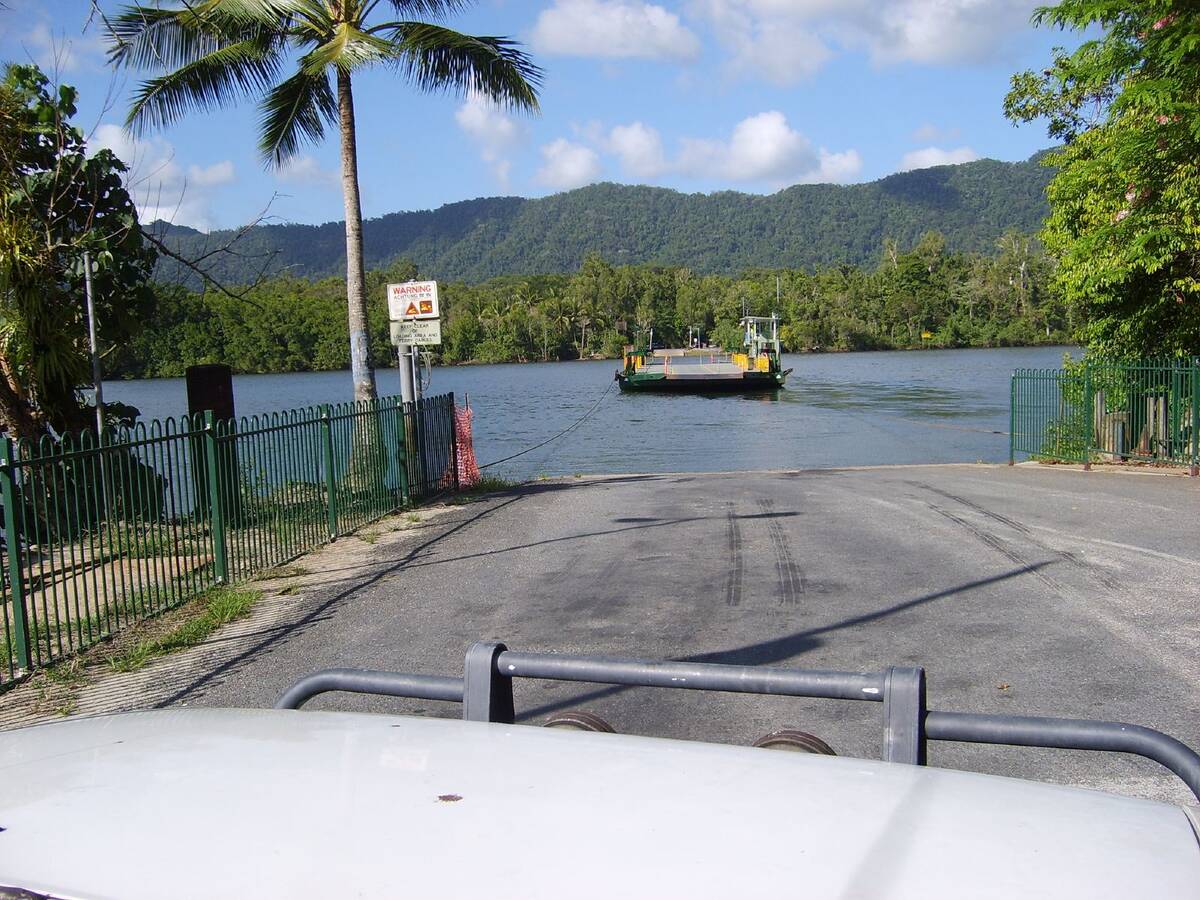
With the coming of white people (and Asian immigrants as well) the forest experienced significant changes again. Since the 1880ies in several areas of the current Daintree Rainforest took place logging. But the forest was stubborn, the regrowth of shrubs and trees was very fast.
The logging continued well into the 1980ies and was stopped in the state forests in 1988.
Thus, the Daintree Rainforest is not a mass of ancient, virgin forest. Each part of this forest has its own history and it is not a uniform massif of rainforest either: it includes man-made clearings, villages, and also other valuable ecosystems, such as mangrove forests.
People are part of these ecosystems as well.
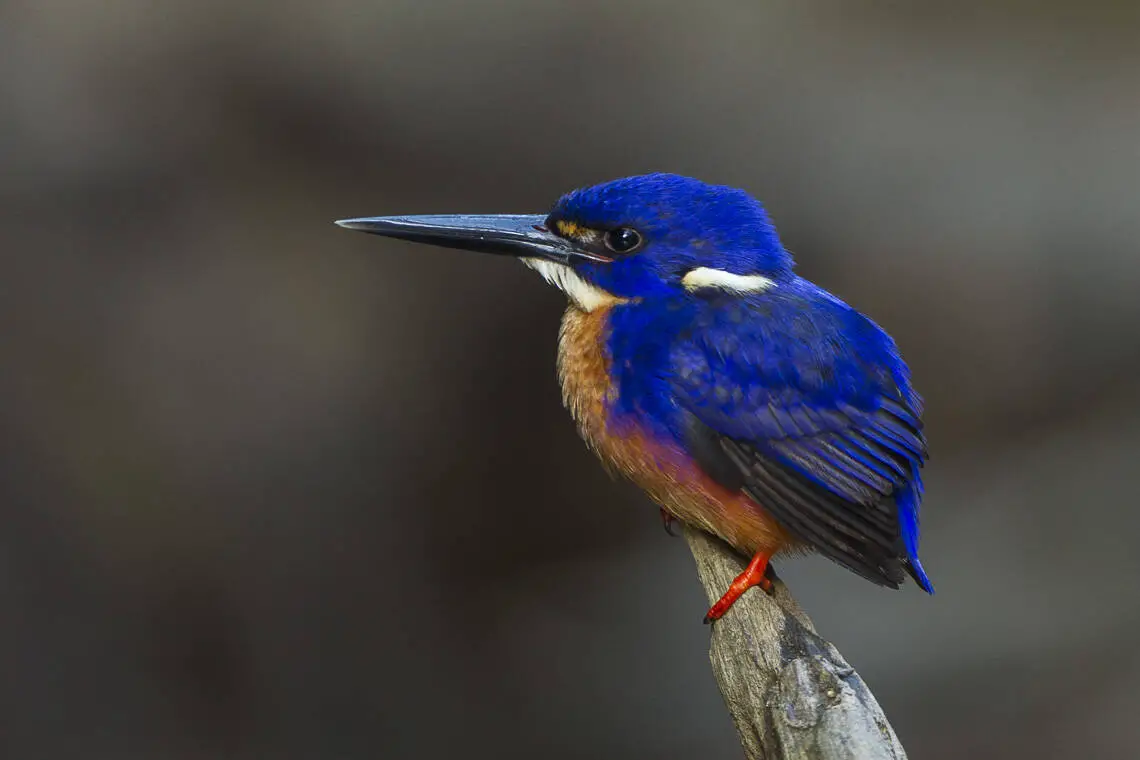
The Eastern Kuku Yalanji have lived in the Daintree rainforest for millennia. People live in the Daintree area today as well. Life in the rainforest differs from life in other ecosystems. For example, even if it is hot, heaters or stoves are very helpful: they keep the clothes and the whole house dry and mold-free in an extremely wet climate.
The Daintree Rainforest is a cultural landscape, well-known and also well-researched if compared to most rainforests of the world.
Which is the oldest tropical rainforest in the world?
Even if some small pockets of the Daintree Rainforest survived the ice ages, there is little chance that any patch in this tropical rainforest has existed for millions of years without interruption.
Elsewhere some rainforests may have persisted throughout the ice ages. Such are some rainforests in South-East Asia, especially in the northern part of Borneo. There the rainforest might have existed continuously for 20 million years (since the Miocene) or even longer.
But if someone asks: “Which is the oldest tropical rainforest on Earth?”, the correct answer would be: “We do not know yet. A lot more research is needed to answer this.”
Richard Daintree
The forest got its name from the Daintree River that in turn got its name in 1873 from a person – Richard Daintree (1832-1878). This English geologist has played an important role in the history of Queensland. He arrived in Australia around 1852 and came to Queensland in 1864. This was a remote, little-known, and wild country for European immigrants in these times.
R. Daintree made some geological discoveries in this region – he found gold, coal, and copper and promoted the creation of a state institution for further research of the natural riches of Queensland.
He did a large work to popularise Queensland to future immigrants, especially through the use of new technology – photography. His exhibitions of the life of gold miners in Queensland were quite popular in the 1870ies and attracted newcomers to this part of Australia.
Richard Daintree himself never visited the area around the Daintree River. The name of the river was given by George Elphinstone Dalrymple, the explorer of this area and friend of R. Daintree.
Protection of the forest
Today the virgin Daintree Rainforest is an internationally recognized value, a part of the UNESCO World Heritage monument “Wet Tropics of Queensland”.
The introduction of nature conservation restrictions over this enormous area (the whole World Heritage monument is 893,453 ha large) was not a simple feat. There are sides to such a decision and each of the sides has its own arguments.
The rainforest is divided into numerous parcels with diverse owners. People live there and would like to have access to the outside world through good roads, and bridges. But, from the other side, new bridges and roads may bring in new inhabitants, even more roads, and more fragmentation.
In 1983-1984 there was a widely known conflict between the environmentalists and local authorities regarding the construction of a road between Cape Tribulation and Bloomfield. Many activists tried to block the works, emotions were running high. The road was built but the attention of the nation to the values of the rainforest was attracted.
The conservation movement mobilized and in 1988 their activities resulted in the declaration of a UNESCO World Heritage monument. The international status of World Heritage monuments was very high in these times and this nomination further cemented the international fame of the Australian rainforests. It led to the development of mass tourism – a phenomenon that brought new perils for the environment but also new business possibilities for locals.
Some unusual species of the Daintree Rainforest
There are forests with higher biological diversity, such as Yasuni Forest in Ecuador. But Daintree Rainforest excels in another category: a high number of so-called “primitive” plants and animals that are similar to long-extinct species.
Some of the unusual finds in the Daintree Rainforest are:
- Southern cassowary (Casuarius casuarius) – one of three cassowary species of the world. Less than 4,600 cassowaries live in Australia and Daintree Rainforest is one of the most valuable habitats for the remaining birds. This bird is one of the key species of this forest: it is assessed that at least 70-100 plant species depend on them because cassowaries are the only species that are able to carry around the heavy seeds of many trees.
- Daintree River ringtail possum (Pseudochirulus cinereus) – only in 1989 it was declared as a separate species. This animal lives only in the Daintree Rainforest and near it.
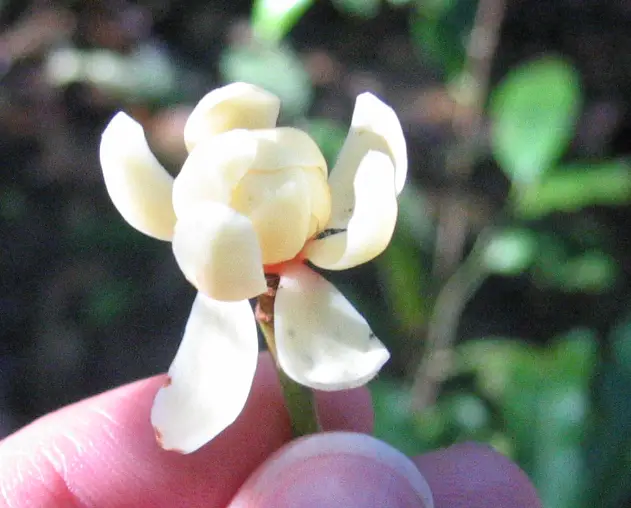
Flower of Idiospermum australiense./ Daniel Spronk, Wikimedia Commons / CC BY-SA 3.0 - Idiospermum australiense – one of the most primitive flowering plants in the world, found only in the Daintree forest and near it. This is a large tree that produces weird, poisonous fruits. Although this rare tree was known earlier, it was rediscovered and recognized as a separate species only in 1971-1972. Most likely, the animal that could spread the poisonous seeds of this tree, is extinct.
- Geosiris australiensis – a beautiful parasitic plant that was discovered in 2017 and is found only in the Daintree National Park. Just a small, white flower appears above the rainforest litter for a short time and then wilts away, leaving no trace above the ground.
- Daintree penda (Lindsayomyrtus racemoides) – a slow-growing tree with fine, yellowish flowers. The young leaves have an unusual, lilac or white color. This tree is found mostly in the Daintree area, but also in Papua New Guinea and Indonesia.
- Porcelain fruit (Fagraea cambagei) – this tree is a relative of gentians. It has fragrant, yellow flowers. But a lot more impressive are its beautiful fruits that are similar to oversized berries in a clear white or pink color. It is found only in the rainforests of Queensland.
References
- A Handbook for Tour Guides Daintree River to Cape Tribulation, Cairns: Cassowary Publications.
- Daintree National Park (CYPAL), Queensland Government, Department of Environment and Science. Accessed on 12 October 2022.
- When woodlands ruled the Daintree, Ecos. September 22, 1997.
- History of the Development in the Daintree, Rainforest Rescue. Accessed on 8 October 2022.
- David W. Hilbert, Andrew Graham, Mike S. Hopkins, Glacial and interglacial refugia within a long-term rainforest refugium: The Wet Tropics Bioregion of NE Queensland, Australia, Palaeogeography, Palaeoclimatology, Palaeoecology 251 (2007) 104–118. Accessed on 12 October 2022.
 Linked articles
Linked articles
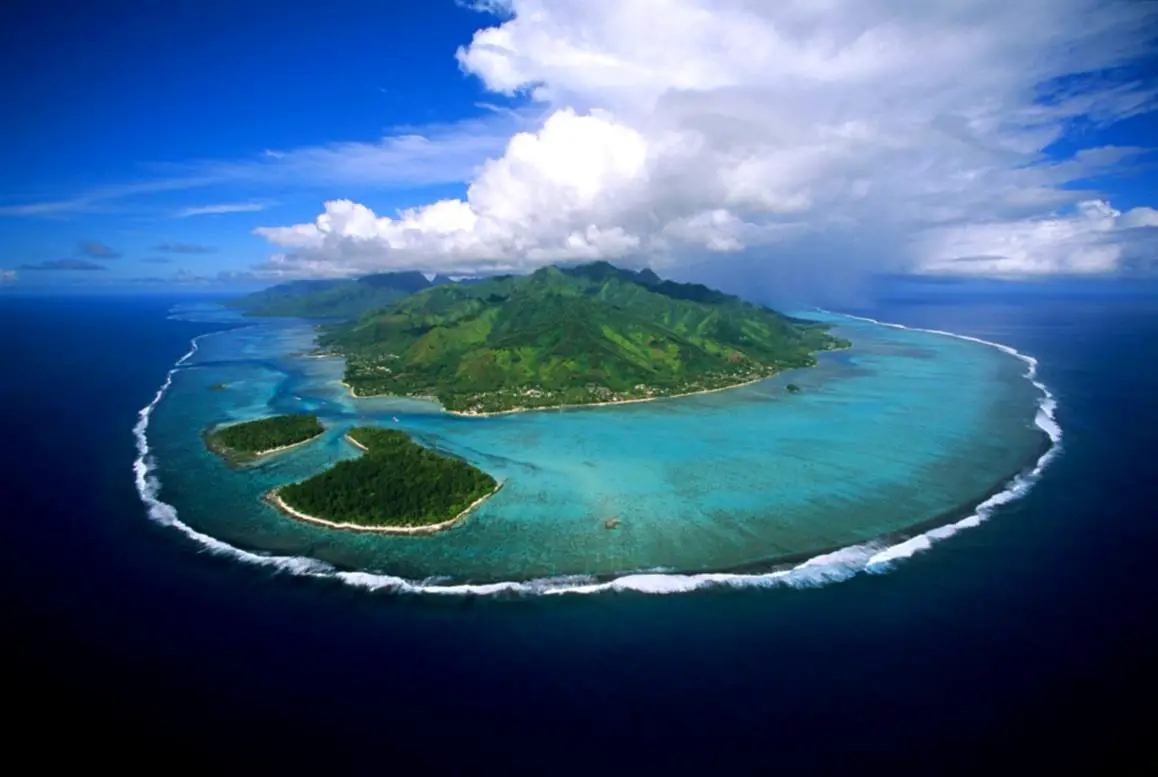
Wonders of Australia and Oceania
The word “exotic” definitely refers to Australia and Oceania. Here are located many unique and mysterious landmarks, many places here deserve to be called – “One of the most beautiful places in the world”.
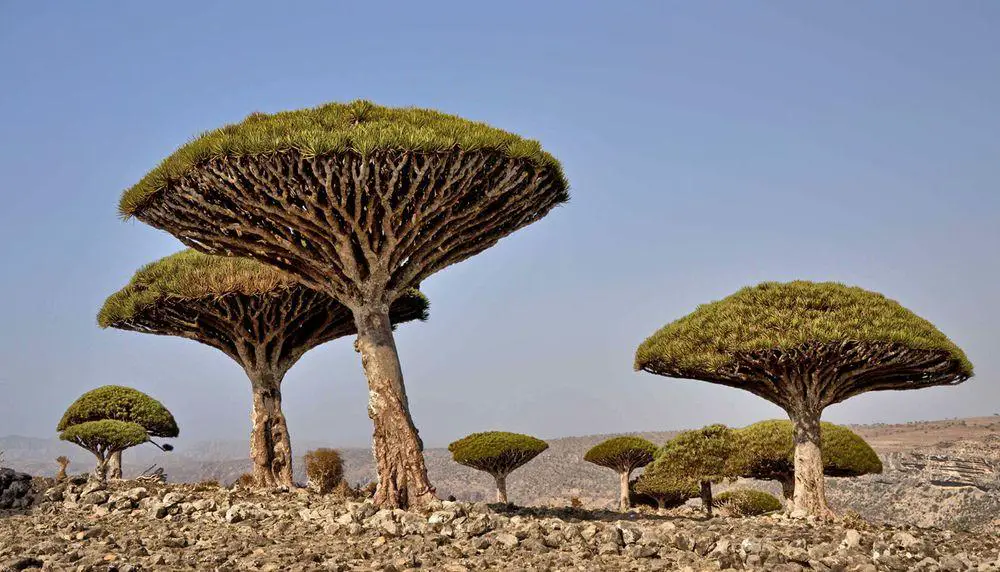
Ecosystems
Biotope is a rather small area with uniform environmental conditions and a specific community of life. Wondermondo describes biotopes and ecosystems which have striking looks, look very beautiful, or have other unusual characteristics.
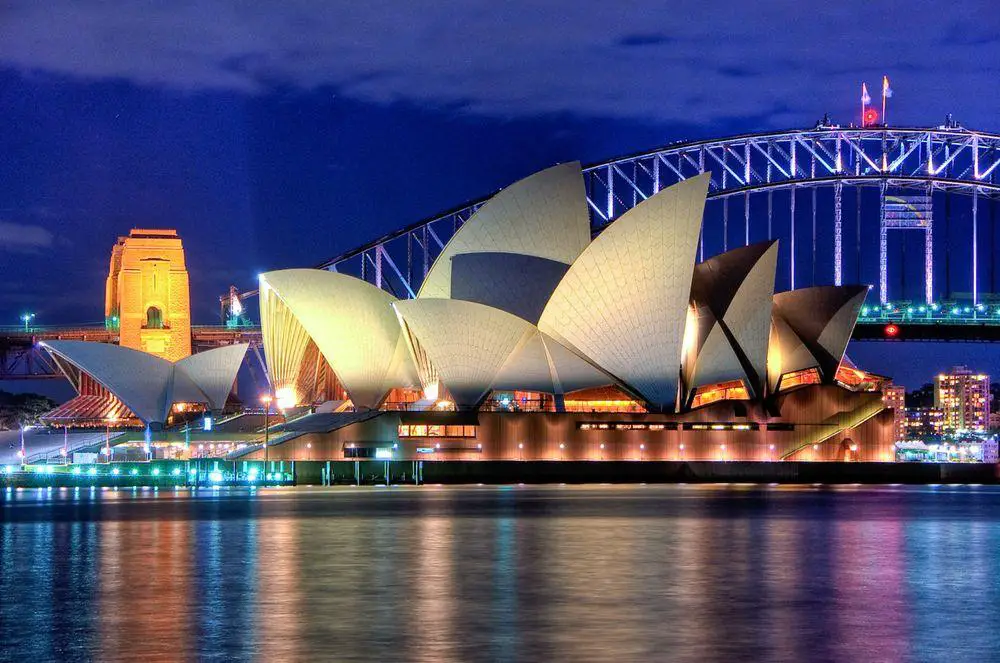
Wonders of Australia
The enormous and diverse area of Australia contains countless amazing and unique monuments. Parts of the country have not been thoroughly investigated and sometimes there are reported new, surprising finds.
 Recommended books
Recommended books
Bushwalking Around Cairns & Far North Queensland: Hiking The Daintree
The areas around Cairns offer some of the best bushwalking (hiking, tramping, trekking, trail running, whatever you call it) opportunities in the world. The best tracks and trip ideas are kept secret though because locals are protective of their favorite spots and National Parks rangers do not encourage visitors. For this reason, most national parks in North Queensland are neglected by tourists except for the few areas accessible to bogans in their four-wheel drives.
Destination Daintree: Journey to Crocodile Country North Queensland (Destiny in Disguise)
Based on a true story of family, courage and resilience.
Six children travelled to the Daintree with their parents in 1927 – 1936. They were all under 12 when they first arrived in one of the most inhospitable but beautiful environments on earth. By a trick of destiny they were joined by 15 year old redhead Ginger (George Whittaker).

